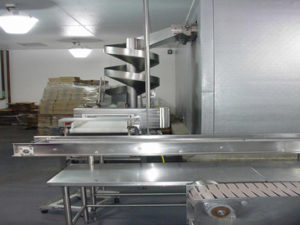Sheet metal is a highly versatile fabrication material, with properties that can vary greatly between the different steel grades and types. Each different type of sheet metal offers its own advantages and disadvantages. The best fit for a project depends on the properties required for the final product. For example, certain materials will provide high levels of corrosion resistance, while others may offer higher levels of formability, hardness, or durability.
Stainless Steel
This popular material contains a minimum of 10.5% chromium and offers corrosion resistance, shine, and hardness. There are three grades of stainless steel common in sheet metal fabrication:
- Austenitic. The most common grade, austenitic stainless steel is labeled as 300 series stainless steel. It is non-magnetic, contains minimal carbon, and high amounts of nickel and chromium. This type of sheet metal is particularly well-known for its resistance to corrosion, as well as its formability.
- Ferritic. Frequently labeled as 400 series stainless steel, ferritic steel contains only trace amounts of nickel. It is largely composed of chromium, cannot be heat treated, and features magnetic properties. Ferritic stainless steel is not ideal for most structural uses but is favored for decorations and in applications that require strong corrosion resistance.
- Martensitic. Martensitic stainless steel offers both corrosion resistance and heat treatability. It contains no nickel and is available in a range of hardness levels.
Cold Rolled Steel
The cold rolling process takes hot rolled steel and works it further in order to achieve a particularly smooth finish. Cold rolled steel is able to hold very tight tolerances when forming.
The two most common cold-rolled steel alloys include:
- 1008. This steel is highly weldable and features decent formability, making it common for use in drawing and other cold forming operations.
- 1018. This carbon steel alloy is easily machined, making it ideal for the production of strong components such as gears, bolts, and structural parts.
High-Carbon Steel
Often found in springs and wear plates, high-carbon steel contains approximately 0.6-2.5% carbon. This increases the material’s hardness, making it more durable than stainless steel. It is also highly affordable and unlikely to deform or warp under harsh conditions. While it does offer increased durability, high-carbon steel is also more brittle than stainless steel. It is prone to rust and must be coated or finished to add corrosion resistance.
Low-Carbon Steel
The most notable benefit of low-carbon steel is the ease with which it can be welded and fabricated. This type of sheet metal contains a maximum of 0.2% carbon. It is highly ductile, transfers heat easily, and offers significant malleability. Like high-carbon steel, low-carbon steel is also more affordable than stainless steel. Low-carbon steel is susceptible to corrosion, making it ill-suited to harsh or damp environments. It is also less strong than most grades of stainless steel.
Tool Steel
Tool steel is exceptionally hard, making it a popular choice for the fabrication of tools used to cut and form other types of steels, such as punches, hammers, dies, and blades. This type of sheet metal offers excellent versatility and has a carbon content of approximately 1%. Additionally, tool steel is resistant to abrasion and performs well even in extreme temperatures.
Alloy Steel
The alloy of steel may be altered to contain a variety of different elements. The inclusion of nickel or vanadium, for example, will increase the strength of the alloy steel. For greater durability, fabricators may include chromium, manganese, or tungsten. This versatility allows alloy steel to be easily adapted for strength, rigidity, or corrosion resistance.
<Learn about sheet metal forming processes.>
Sheet Metal Fabrication at PDF, Inc.
Given the wide range of different sheet metal types means, there is an option to suit virtually any type of project. Since 1994, the team at PDF, Inc. have been designing and fabricating specialty parts for customers in a diverse range of industries. We work on projects both large and small, and our team of experts is always on hand to help you choose the ideal material for your unique application.
Request your quote to begin working with us on your next project. If you have any further questions, don’t hesitate to contact us.

